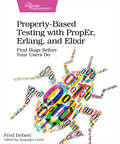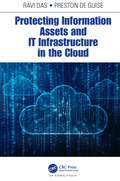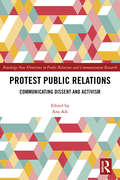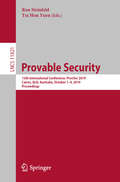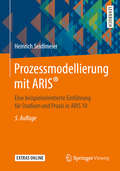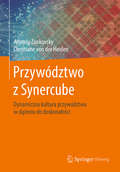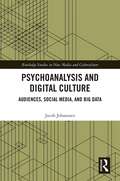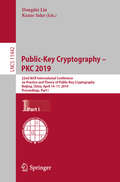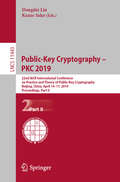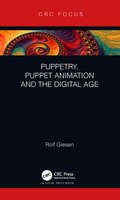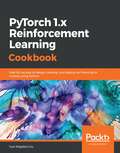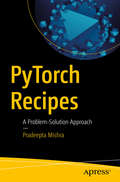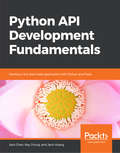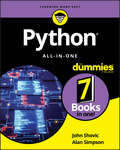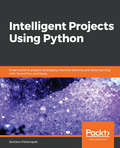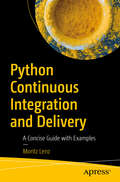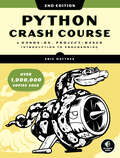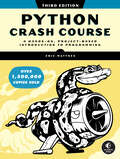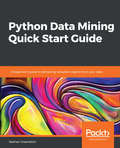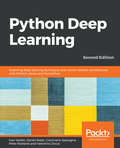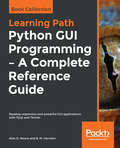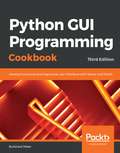- Table View
- List View
Property-Based Testing with PropEr, Erlang, and Elixir: Find Bugs Before Your Users Do
by Fred HebertProperty-based testing helps you create better, more solid tests with little code. By using the PropEr framework in both Erlang and Elixir, this book teaches you how to automatically generate test cases, test stateful programs, and change how you design your software for more principled and reliable approaches. You will be able to better explore the problem space, validate the assumptions you make when coming up with program behavior, and expose unexpected weaknesses in your design. PropEr will even show you how to reproduce the bugs it found. With this book, you will be writing efficient property-based tests in no time. Most tests only demonstrate that the code behaves how the developer expected it to behave, and therefore carry the same blind spots as their authors when special conditions or edge cases show up. Learn how to see things differently with property tests written in PropEr. Start with the basics of property tests, such as writing stateless properties, and using the default generators to generate test cases automatically. More importantly, learn how to think in properties. Improve your properties, write custom data generators, and discover what your code can or cannot do. Learn when to use property tests and when to stick with example tests with real-world sample projects. Explore various testing approaches to find the one that's best for your code. Shrink failing test cases to their simpler expression to highlight exactly what breaks in your code, and generate highly relevant data through targeted properties. Uncover the trickiest bugs you can think of with nearly no code at all with two special types of properties based on state transitions and finite state machines. Write Erlang and Elixir properties that generate the most effective tests you'll see, whether they are unit tests or complex integration and system tests. What You Need Basic knowledge of Erlang, optionally ElixirFor Erlang tests: Erlang/OTP >= 20.0, with Rebar >= 3.4.0For Elixir tests: Erlang/OTP >= 20.0, Elixir >= 1.5.0
Protecting Information Assets and IT Infrastructure in the Cloud
by Preston de Guise Ravi DasToday, many businesses and corporations are moving their on premises IT Infrastructure to the Cloud. There are numerous advantages to do doing so, including on-demand service, scalability, and fixed pricing. As a result, the Cloud has become a popular target of cyber-based attacks. Although an ISP is often charged with keeping virtual infrastructure secure, it is not safe to assume this. Back-up measures must be taken. This book explains how to guard against cyber-attacks by adding another layer of protection to the most valuable data in the Cloud: customer information and trade secrets.
Protest Public Relations: Communicating dissent and activism (Routledge New Directions in PR & Communication Research)
by Ana AdiGlobal movements and protests from the Arab Spring to the Occupy Movement have been attributed to growing access to social media, while without it, local causes like #bringbackourgirls and the ice bucket challenge may have otherwise remained unheard and unseen. Regardless of their nature – advocacy, activism, protest or dissent – and beyond the technological ability of digital and social media to connect support, these major events have all been the results of excellent communication and public relations. But PR remains seen only as the defender of corporate and capitalist interests, and therefore resistant to outside voices such as activists, NGOs, union members, protesters and whistle-blowers. Drawing on contributions from around the world to examine the concepts and practice of "activist," "protest" and "dissent" public relations, this book challenges this view. Using a range of international examples, it explores the changing nature of protest and its relationship with PR and provides a radical analysis of the communication strategies and tactics of social movements and activist groups and their campaigns. This thought-provoking collection will be of interest to researchers and advanced students of public relations, strategic communication, political science, politics, journalism, marketing, and advertising, and also to PR professionals in think tanks and NGOs.
Provable Security: 13th International Conference, ProvSec 2019, Cairns, QLD, Australia, October 1–4, 2019, Proceedings (Lecture Notes in Computer Science #11821)
by Ron Steinfeld Tsz Hon YuenThis book constitutes the refereed proceedings of the 13th International Conference on Provable Security, ProvSec 2019, held in Cairns, QLD, Australia, in October 2019. The 18 full and 6 short papers presented were carefully reviewed and selected from 51 submissions. The papers focus on provable security as an essential tool for analyzing security of modern cryptographic primitives, including a special theme on “Practical Security.”
Prozessmodellierung mit ARIS®: Eine beispielorientierte Einführung für Studium und Praxis in ARIS 10
by Heinrich SeidlmeierDieses Buch bietet eine praktische Einführung in die Software ARIS Der ARIS Architect 10 der Software AG ist eines der weltweit führenden Prozessmodellierungstools. Dieses Buch bietet eine umfangreiche Einführung in das ARIS-Konzept und das praktische Arbeiten mit der Software. Ziel ist es, das tägliche Arbeiten und einfache Projekte mit ARIS selbstständig zu erledigen. Im Vordergrund stehen die Modellierung und Modellauswertung. Der ARIS-Versionswechsel von 9 auf 10 machte eine Überarbeitung dieses Buchs unumgänglich, die der Autor in der vorliegenden fünften Auflage umgesetzt hat. Dafür hat er die komplette Funktionalität überprüft und angepasst. Das neue Kapitel 2 beschreibt in kurzen Zügen die innovative „ARIS Cloud“ für das orts- und zeitunabhängige Teamwork. Zahlreiche Aufgaben und zwei umfangreiche Fallstudien (jeweils mit Lösungen) bieten eigenständige Übungsmöglichkeiten. Das Buch ist als ARIS-Einführung auch für das Selbststudium bestens geeignet. Abbildungen und Modelle stehen zum Download zur Verfügung und veranschaulichen das Gelernte. Der Autor bringt Ihnen den Umgang mit der Software bei Nach einer kurzen Einführung in das Prozessmanagement beschäftigt sich der Autor unter anderem mit den folgenden Thematiken:· ARIS Cloud· Geschäftsprozessmodellierung und -optimierung· Systemverwaltung· Modellgestützte Prozessanalyse· BPMN 2.0 mit ARIS Mit seinem Buch schafft Heinrich Seidlmeier eine Einführung in ARIS für Studierende, aber auch für Praktiker in Beruf und Weiterbildung.
Przywództwo z Synercube: Dynamiczna kultura przywództwa w dążeniu do doskonałości
by Anatoly Zankovsky Christiane von der HeidenOpis teorii przywództwa Synercube z praktycznymi przykładami. W książce omówionych zostało 10 stylów przywódczych opartych na trzech wymiarach: ludzie, zadania i wartości. Czytelnik ma okazję poznać różne rodzaje interakcji zachodzących w środowisku organi-zacji oraz dowiedzieć się, jak dzięki sile organizacji i za pomocą dostępnych zasobów uzyskiwać doskonałe wyniki, budując tym samym trwałą kulturę organizacyjną. Teoria Sy-nercube jest przewodnikiem na drodze do zmian. Model Synercube odnosi się do szeregu efektów psychologicznych oraz behawioralnych. Wprowadzanie zmian w oparciu o model Synercube staje się skuteczne, a efekty trwałe. Menadżerowie zarówno małych, jak i dużych organizacji z pewnością skorzystają na lekturze tej książki.
Psychoanalysis and Digital Culture: Audiences, Social Media, and Big Data (Routledge Studies in New Media and Cyberculture)
by Jacob JohanssenPsychoanalysis and Digital Culture offers a comprehensive account of our contemporary media environment—digital culture and audiences in particular—by drawing on psychoanalysis and media studies frameworks. It provides an introduction to the psychoanalytic affect theories of Sigmund Freud and Didier Anzieu and applies them theoretically and methodologically in a number of case studies. Johanssen argues that digital media fundamentally shape our subjectivities on affective and unconscious levels, and he critically analyses phenomena such as television viewing, Twitter use, affective labour on social media, and data-mining. How does watching television involve the body? Why are we so drawn to reality television? Why do we share certain things on social media and not others? How are bodies represented on social media? How do big data and data mining influence our identities? Can algorithms help us make better decisions? These questions amongst others are addressed in the chapters of this wide-ranging book. Johanssen shows in a number of case studies how a psychoanalytic angle can bring new insights to audience studies and digital media research more generally. From audience research with viewers of the reality television show Embarrassing Bodies and how they unconsciously used it to work through feelings about their own bodies, to a critical engagement with Hardt and Negri's notion of affective labour and how individuals with bodily differences used social media for their own affective-digital labour, the book suggests that an understanding of affect based on Freud and Anzieu is helpful when thinking about media use. The monograph also discusses the perverse implications of algorithms, big data and data mining for subjectivities. In drawing on empirical data and examples throughout, Johanssen presents a compelling analysis of our contemporary media environment.
Psychologie des Geschichtenerzählens
by Tobias C. BreinerIn diesem Buch geht es um die Psychologie guter Geschichten und deren Handlungsfiguren. Es beantwortet Fragen wie:Warum rühren uns manche Filme zu Tränen und andere lassen uns kalt?Warum fesseln uns manche Romane so, dass wir bis tief in die Nacht weiterlesen? Warum quälen wir uns dagegen durch manche Pflichtlektüre hindurch?Warum zocken wir manches Adventure-Game bis zum letzten Level während wir bei anderen schnell die Lust verlieren? Das Werk ist für all diejenigen verfasst, die sich in irgendeiner Weise mit der Erzeugung und Bewertung von Handlungen befassen. Sowohl Charakter- und Game-Designer profitieren durch neue archetypische Modelle und Psychologen können mit der hier präsentierten dodekazyklischen Heldenreise innovative therapeutische Methoden entwickeln. Roman- und Drehbuchautoren bekommen eine Blaupause für erfolgsversprechende Geschichten, die sich auch auf das Interactive Storytelling übertragen lässt und Regisseure sowie Film-, Computerspiel- und Literaturkritiker erhalten durch den Inhalt des Werkes gezielte Bewertungskriterien.
Public-Key Cryptography – PKC 2019: 22nd IACR International Conference on Practice and Theory of Public-Key Cryptography, Beijing, China, April 14-17, 2019, Proceedings, Part I (Lecture Notes in Computer Science #11442)
by Dongdai Lin Kazue SakoThe two-volume set LNCS 11442 and 11443 constitutes the refereed proceedings of the 22nd IACR International Conference on the Practice and Theory of Public-Key Cryptography, PKC 2019, held in Beijing, China, in April 2019. The 42 revised papers presented were carefully reviewed and selected from 173 submissions. They are organized in topical sections such as: Cryptographic Protocols; Digital Signatures; Zero-Knowledge; Identity-Based Encryption; Fundamental Primitives; Public Key Encryptions; Functional Encryption; Obfuscation Based Cryptography; Re- Encryption Schemes; Post Quantum Cryptography.
Public-Key Cryptography – PKC 2019: 22nd IACR International Conference on Practice and Theory of Public-Key Cryptography, Beijing, China, April 14-17, 2019, Proceedings, Part I (Lecture Notes in Computer Science #11442)
by Dongdai Lin Kazue SakoThe two-volume set LNCS 11442 and 11443 constitutes the refereed proceedings of the 22nd IACR International Conference on the Practice and Theory of Public-Key Cryptography, PKC 2019, held in Beijing, China, in April 2019. The 42 revised papers presented were carefully reviewed and selected from 173 submissions. They are organized in topical sections such as: Cryptographic Protocols; Digital Signatures; Zero-Knowledge; Identity-Based Encryption; Fundamental Primitives; Public Key Encryptions; Functional Encryption; Obfuscation Based Cryptography; Re- Encryption Schemes; Post Quantum Cryptography.
Public-Key Cryptography – PKC 2019: 22nd IACR International Conference on Practice and Theory of Public-Key Cryptography, Beijing, China, April 14-17, 2019, Proceedings, Part II (Lecture Notes in Computer Science #11443)
by Dongdai Lin Kazue SakoThe two-volume set LNCS 11442 and 11443 constitutes the refereed proceedings of the 22nd IACR International Conference on the Practice and Theory of Public-Key Cryptography, PKC 2019, held in Beijing, China, in April 2019. The 42 revised papers presented were carefully reviewed and selected from 173 submissions. They are organized in topical sections such as: Cryptographic Protocols; Digital Signatures; Zero-Knowledge; Identity-Based Encryption; Fundamental Primitives; Public Key Encryptions; Functional Encryption; Obfuscation Based Cryptography; Re- Encryption Schemes; Post Quantum Cryptography.
Puppetry, Puppet Animation and the Digital Age
by Rolf GiesenRolf Giesen’s Puppetry, Puppet Animation and the Digital Age explores the unique world of puppetry animation and its application in the digital age. With the advent of digital animation, many individuals see puppetry and 2D animation as being regulated to a niche market. Giesen’s text argues against this viewpoint, by demonstrating the pure aesthetic value they have, as well as examples of some of the greatest cinematic uses of puppets. Such samples include, The Adventures of Prince Achmed, Ladislas Starevich, O’Brien, Harryhausen and Danforth, Trnka and Švankmajer, Aardman and Laika Studios, ParaNorman, and the Boxtrolls. Even live-action blockbusters, such as the Star Wars saga utilize puppetry for costume applications as noted within the text. The use of puppets not only helps create a wonderous world and memorable characters, but is also one of the purest extensions of an artist. Key Features Includes interviews with past and present practitioners of model animation as well as computer animation Reviews of classic and recent entries in both fields Comparison of what is better in stop motion versus computer animation A detailed history of animation and stop motion films
PyTorch 1.0 Reinforcement Learning Cookbook: Over 60 Recipes To Design, Develop, And Deploy Self-learning Ai Models Using Python
by Yuxi (Hayden) LiuMachine learning engineers, data scientists and AI researchers looking for quick solutions to different problems in RL will find the book useful. Prior exposure to machine learning concepts is required, while previous experience with PyTorch will be a bonus.
PyTorch Deep Learning Hands-On: Apply modern AI techniques with CNNs, RNNs, GANs, reinforcement learning, and more
by Sherin Thomas Sudhanshu PassiAll the key deep learning methods built step-by-step in PyTorchKey FeaturesUnderstand the internals and principles of PyTorchImplement key deep learning methods in PyTorch: CNNs, GANs, RNNs, reinforcement learning, and moreBuild deep learning workflows and take deep learning models from prototyping to productionBook DescriptionPyTorch is a new, lightweight, and Python-first tool for deep learning. Built by Facebook to offer flexibility and speed, it has quickly become the preferred tool for deep learning experts. PyTorch helps you release deep learning models faster than ever before.PyTorch Deep Learning Hands-On shows how to implement every major deep learning architecture in PyTorch. Starting with simple neural networks, it covers PyTorch for computer vision (CNN), natural language processing (RNN), GANs, and reinforcement learning. You will also build deep learning workflows with the PyTorch framework, migrate models built in Python to highly efficient TorchScript, and deploy to production using the most sophisticated available tools.Each chapter focuses on a different area of deep learning. Chapters start with a refresher on the core principles, before sharing the code you need to implement them in PyTorch.If you want to become a deep learning expert this book is for you.What you will learnUse PyTorch to build:Simple Neural Networks – build neural networks the PyTorch way, with high-level functions, optimizers, and moreConvolutional Neural Networks – create advanced computer vision systemsRecurrent Neural Networks – work with sequential data such as natural language and audioGenerative Adversarial Networks – create new content with models including SimpleGAN and CycleGANReinforcement Learning – develop systems that can solve complex problems such as driving or game playingDeep Learning workflows – move effectively from ideation to production with proper deep learning workflow using PyTorch and its utility packagesProduction-ready models – package your models for high-performance production environmentsWho this book is forMachine learning professionals and enthusiasts who know Python and want to build efficient and powerful deep learning systems in PyTorch.
PyTorch Recipes: A Problem-Solution Approach
by Pradeepta MishraGet up to speed with the deep learning concepts of Pytorch using a problem-solution approach. Starting with an introduction to PyTorch, you'll get familiarized with tensors, a type of data structure used to calculate arithmetic operations and also learn how they operate. You will then take a look at probability distributions using PyTorch and get acquainted with its concepts. Further you will dive into transformations and graph computations with PyTorch. Along the way you will take a look at common issues faced with neural network implementation and tensor differentiation, and get the best solutions for them. Moving on to algorithms; you will learn how PyTorch works with supervised and unsupervised algorithms. You will see how convolutional neural networks, deep neural networks, and recurrent neural networks work using PyTorch. In conclusion you will get acquainted with natural language processing and text processing using PyTorch.What You Will LearnMaster tensor operations for dynamic graph-based calculations using PyTorchCreate PyTorch transformations and graph computations for neural networksCarry out supervised and unsupervised learning using PyTorch Work with deep learning algorithms such as CNN and RNNBuild LSTM models in PyTorch Use PyTorch for text processing Who This Book Is ForReaders wanting to dive straight into programming PyTorch.
Python API Development Fundamentals: Develop a full-stack web application with Python and Flask
by Jack Chan Ray Chung Jack HuangLearn all that's needed to build a fully functional web application from scratch. Key Features Delve deep into the principle behind RESTful API Learn how to build a scalable web application with the RESTful API architecture and Flask framework Know what are the exact tools and methodology to test your applications and how to use them Book Description Python is a flexible language that can be used for much more than just script development. By knowing the Python RESTful APIs work, you can build a powerful backend for web applications and mobile applications using Python. You'll take your first steps by building a simple API and learning how the frontend web interface can communicate with the backend. You'll also learn how to serialize and deserialize objects using the marshmallow library. Then, you'll learn how to authenticate and authorize users using Flask-JWT. You'll also learn how to enhance your APIs by adding useful features, such as email, image upload, searching, and pagination. You'll wrap up the whole book by deploying your APIs to the cloud. By the end of this book, you'll have the confidence and skill to leverage the power of RESTful APIs and Python to build efficient web applications. What you will learn Understand the concept of a RESTful API Build a RESTful API using Flask and the Flask-Restful extension Manipulate a database using Flask-SQLAlchemy and Flask-Migrate Send out plaintext and HTML format emails using the Mailgun API Implement a pagination function using Flask-SQLAlchemy Use caching to improve API performance and efficiently obtain the latest information Deploy an application to Heroku and test it using Postman Who this book is for This book is ideal for aspiring software developers who have a basic-to-intermediate knowledge of Python programming and who want to develop web applications using Python. Knowledge of how web applications work will be beneficial but is not essential.
Python All-in-One For Dummies
by Alan Simpson John ShovicYour one-stop resource on all things Python Thanks to its flexibility, Python has grown to become one of the most popular programming languages in the world. Developers use Python in app development, web development, data science, machine learning, and even in coding education classes. There's almost no type of project that Python can't make better. From creating apps to building complex websites to sorting big data, Python provides a way to get the work done. Python All-in-One For Dummies offers a starting point for those new to coding by explaining the basics of Python and demonstrating how it’s used in a variety of applications. Covers the basics of the language Explains its syntax through application in high-profile industries Shows how Python can be applied to projects in enterprise Delves into major undertakings including artificial intelligence, physical computing, machine learning, robotics and data analysis This book is perfect for anyone new to coding as well as experienced coders interested in adding Python to their toolbox.
Python Artificial Intelligence Projects: 9 real-world AI projects leveraging machine learning and deep learning with TensorFlow and Keras
by Santanu PattanayakThis book is intended for data scientists, machine learning professionals, and deep learning practitioners who are ready to extend their knowledge and possibilities in AI. If you want to build real-life smart systems to play a crucial role in every complex domain, then this book is what you need. Knowledge of Python programming and deep learning concepts are expected to get the most out of the book.
Python Continuous Integration and Delivery: A Concise Guide with Examples
by Moritz LenzGain the techniques and tools that enable a smooth and efficient software development process in this quick and practical guide on Python continuous integration (CI) and continuous delivery (CD). Based on example applications, this book introduces various kinds of testing and shows you how to set up automated systems that run these tests, and install applications in different environments in controlled ways. Python Continuous Integration and Delivery tackles the technical problems related to software development that are typically glossed over in pure programming texts.After reading this book, you’ll see that in today's fast-moving world, no software project can afford to go through development, then an integration phase of unpredictable length and complexity, and finally be shipped to the customer -- just to find out that the resulting application didn't quite fill their need. Instead, you’ll discover that practicing continuous integration and continuous delivery reduces the risks by keeping changes small and automating otherwise painful processes. What You Will LearnCarry out various kinds of testing, including unit testing and continuous integration testing, of your Python code using JenkinsBuild packages and manage repositoriesIncorporate Ansible and Go for automated packaging and other deploymentsManage more complex and robust deploymentsWho This Book Is ForPython programmers and operating staff that work with Python applications.
Python Crash Course, 2nd Edition: A Hands-On, Project-Based Introduction to Programming
by Eric MatthesSecond edition of the best selling Python book in the world. A fast-paced, no-nonsense guide to programming in Python. This book teaches beginners the basics of programming in Python with a focus on real projects.This is the second edition of the best selling Python book in the world. Python Crash Course, 2nd Edition is a straightforward introduction to the core of Python programming. Author Eric Matthes dispenses with the sort of tedious, unnecessary information that can get in the way of learning how to program, choosing instead to provide a foundation in general programming concepts, Python fundamentals, and problem solving. Three real world projects in the second part of the book allow readers to apply their knowledge in useful ways. Readers will learn how to create a simple video game, use data visualization techniques to make graphs and charts, and build and deploy an interactive web application. Python Crash Course, 2nd Edition teaches beginners the essentials of Python quickly so that they can build practical programs and develop powerful programming techniques.
Python Crash Course, 3rd Edition: A Hands-On, Project-Based Introduction to Programming
by Eric MatthesPython Crash Course is the world&’s bestselling programming book, with over 1,500,000 copies sold to date!Python Crash Course is the world&’s best-selling guide to the Python programming language. This fast-paced, thorough introduction will have you writing programs, solving problems, and developing functioning applications in no time.You&’ll start by learning basic programming concepts, such as variables, lists, classes, and loops, and practice writing clean code with exercises for each topic. You&’ll also learn how to make your programs interactive and test your code safely before adding it to a project. You&’ll put your new knowledge into practice by creating a Space Invaders–inspired arcade game, building a set of data visualizations with Python&’s handy libraries, and deploying a simple application online.As you work through the book, you&’ll learn how to:Use powerful Python libraries and tools, including pytest, Pygame, Matplotlib, Plotly, and DjangoMake increasingly complex 2D games that respond to keypresses and mouse clicksGenerate interactive data visualizations using a variety of datasetsBuild apps that allow users to create accounts and manage their own data, and deploy your apps online Troubleshoot coding errors and solve common programming problems New to this edition: This third edition is completely revised to reflect the latest in Python code. New and updated coverage includes VS Code for text editing, the pathlib module for file handling, pytest for testing your code, as well as the latest features of Matplotlib, Plotly, and Django.If you&’ve been thinking about digging into programming, Python Crash Course will provide you with the skills to write real programs fast. Why wait any longer? Start your engines and code!Covers Python 3.x
Python Data Mining Quick Start Guide: A beginner's guide to extracting valuable insights from your data
by Nathan GreeneltchExplore the different data mining techniques using the libraries and packages offered by PythonKey FeaturesGrasp the basics of data loading, cleaning, analysis, and visualizationUse the popular Python libraries such as NumPy, pandas, matplotlib, and scikit-learn for data miningYour one-stop guide to build efficient data mining pipelines without going into too much theoryBook DescriptionData mining is a necessary and predictable response to the dawn of the information age. It is typically defined as the pattern and/ or trend discovery phase in the data mining pipeline, and Python is a popular tool for performing these tasks as it offers a wide variety of tools for data mining.This book will serve as a quick introduction to the concept of data mining and putting it to practical use with the help of popular Python packages and libraries. You will get a hands-on demonstration of working with different real-world datasets and extracting useful insights from them using popular Python libraries such as NumPy, pandas, scikit-learn, and matplotlib. You will then learn the different stages of data mining such as data loading, cleaning, analysis, and visualization. You will also get a full conceptual description of popular data transformation, clustering, and classification techniques.By the end of this book, you will be able to build an efficient data mining pipeline using Python without any hassle.What you will learnExplore the methods for summarizing datasets and visualizing/plotting dataCollect and format data for analytical workAssign data points into groups and visualize clustering patternsLearn how to predict continuous and categorical outputs for dataClean, filter noise from, and reduce the dimensions of dataSerialize a data processing model using scikit-learn’s pipeline featureDeploy the data processing model using Python’s pickle moduleWho this book is forPython developers interested in getting started with data mining will love this book. Budding data scientists and data analysts looking to quickly get to grips with practical data mining with Python will also find this book to be useful. Knowledge of Python programming is all you need to get started.
Python Deep Learning - Second Edition: Exploring deep learning techniques and neural network architectures with PyTorch, Keras, and TensorFlow, 2nd Edition
by Daniel Slater Gianmario Spacagna Peter Roelants Valentino Zocca Ivan VasilevThis book is for Data Science practitioners, Machine Learning Engineers and Deep learning aspirants who have a basic foundation of Machine Learning concepts and some programming experience with Python. A mathematical background with a conceptual understanding of calculus and statistics is also desired
Python GUI Programming - A Complete Reference Guide: Develop responsive and powerful GUI applications with PyQt and Tkinter
by Alan D. Moore B. M. HarwaniExplore Python's GUI frameworks and create visually stunning and feature-rich applications Key Features Integrate stunning data visualizations using Tkinter Canvas and Matplotlib Understand the basics of 2D and 3D animation in GUI applications Explore PyQt's powerful features to easily design and customize your GUI applications Book Description A responsive graphical user interface (GUI) helps you interact with your application, improves user experience, and enhances the efficiency of your applications. With Python, you'll have access to elaborate GUI frameworks that you can use to build interactive GUIs that stand apart from the rest. This Learning Path begins by introducing you to Tkinter and PyQt, before guiding you through the application development process. As you expand your GUI by adding more widgets, you'll work with networks, databases, and graphical libraries that enhance its functionality. You'll also learn how to connect to external databases and network resources, test your code, and maximize performance using asynchronous programming. In later chapters, you'll understand how to use the cross-platform features of Tkinter and Qt5 to maintain compatibility across platforms. You'll be able to mimic the platform-native look and feel, and build executables for deployment across popular computing platforms. By the end of this Learning Path, you'll have the skills and confidence to design and build high-end GUI applications that can solve real-world problems. This Learning Path includes content from the following Packt products: Python GUI Programming with Tkinter by Alan D. Moore Qt5 Python GUI Programming Cookbook by B. M. Harwani What you will learn Visualize graphs in real time with Tkinter's animation capabilities Use PostgreSQL authentication to ensure data security for your application Write unit tests to avoid regression when updating code Handle different signals generated on mouse clicks using QSpinBox and sliders Employ network concepts, internet browsing, and Google Maps in UI Use graphics rendering to implement animations in your GUI Who this book is for If you're an intermediate Python programmer looking to enhance your coding skills by writing powerful GUIs in Python using PyQT and Tkinter, this is an ideal Learning Path for you. A strong understanding of the Python language is a must to grasp the concepts explained in this book.
Python GUI Programming Cookbook: Develop functional and responsive user interfaces with tkinter and PyQt5, 3rd Edition
by Burkhard MeierOver 90 recipes to help you develop widgets, forms, layouts, charts, and much more using the latest features of Python 3 Key Features Use object-oriented programming to develop impressive GUIs in Python Create interesting charts to visually represent data using Matplotlib Develop GUIs with the latest versions of tkinter, PyQt5, and wxPython frameworks Book Description Python is a multi-domain, interpreted programming language that is easy to learn and implement. With its wide support for frameworks to develop GUIs, you can build interactive and beautiful GUI-based applications easily using Python. This third edition of Python GUI Programming Cookbook follows a task-based approach to help you create effective GUIs with the smallest amount of code. Every recipe in this book builds upon the last to create an entire, real-life GUI application. These recipes also help you solve problems that you might encounter while developing GUIs. This book mainly focuses on using Python's built-in tkinter GUI framework. You'll learn how to create GUIs in Python using simple programming styles and object-oriented programming (OOP). As you add more widgets and expand your GUI, you will learn how to connect to networks, databases, and graphical libraries that greatly enhance the functionality of your GUI. You'll also learn how to use threading to ensure that your GUI doesn't become unresponsive. Toward the end, you'll learn about the versatile PyQt GUI framework, which comes along with its own visual editor that allows you to design GUIs using drag and drop features. By the end of the book, you'll be an expert in designing Python GUIs and be able to develop a variety of GUI applications with ease. What you will learn Create amazing GUIs with Python's built-in tkinter module Customize GUIs using layout managers to arrange GUI widgets Advance from the typical waterfall coding style to an OOP style using Python Develop beautiful charts using the free Matplotlib Python module Use threading in a networked environment to make GUIs responsive Discover ways to connect GUIs to a MySQL database Understand how unit tests can be created and internationalize GUI Delve into the world of GUI creation using PyQt5 Who this book is for If you're a programmer or developer looking to enhance your Python skills by writing powerful GUI applications, this book is for you. Familiarity with the Python programming language is necessary to get the most out of the book.
